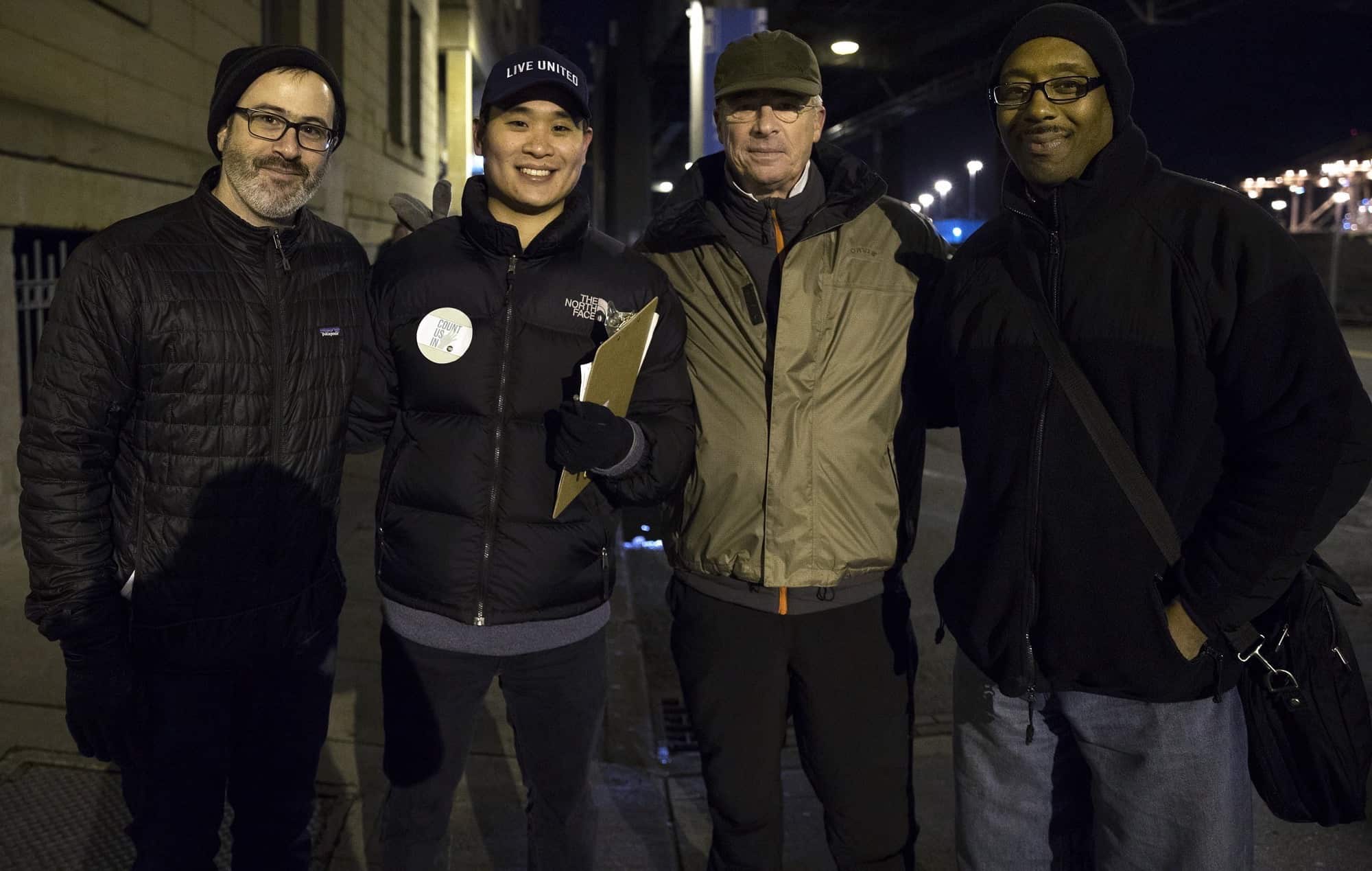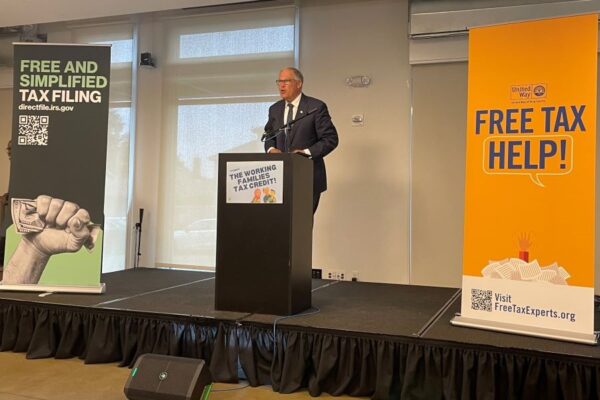Board Member’s Night Documents People Stuck Sleeping Outside
Peter Orser is a United Way Board member and heads the Out of the Rain Council, overseeing our investments in homelessness. He is the retired President and CEO of Weyerhaeuser Real Estate Company and prior to that served as President of Quadrant Homes.
Photo: (l-r) Adam Hasson, Thaddeus Teo, Peter Orser, Glenn Coles
There aren’t a lot of people who can say they were out and about at Pike Place Market at 4am—I can now say I have. Being on United Way of King County’s Board of Directors gives me numerous opportunities to learn more about critical issues like homelessness and the strategic solutions we have in place to solve it. It also gave me the chance to walk the streets of downtown Seattle in the middle of the night to count those sleeping outside, which was an unforgettable experience.
Count Us In is the annual point-in-time count of individuals experiencing homelessness in King County. More than 1,000 community members—including several elected representatives—volunteered to count the number of unsheltered individuals sleeping on Seattle streets. It was inspiring to see so many volunteers cover so much territory, hoping to be some small part of the solution, but we need to harness that energy in other ways and for more than just a night!
I was part of the United Way team assigned to count Census Tract 81, covering the streets and alleyways between the Waterfront and 5th Ave, from Yesler Way up to Pine Street. We split into two groups to cover the area with the goal of tallying up the number of tents and individuals, making some estimates of age and gender, and moving on without disturbing their sleep.
Some notable observations:
- We were able to get an accurate count of people sleeping on the streets, but assessing age or gender was almost impossible because people were bundled up in defense of the Seattle winter elements. No one should be sleeping outside in Seattle, period, especially when it is 40 degrees!
- Groups doing the count were accompanied by a paid guide who is formerly or currently homeless. Guides have the experience and knowledge of where to go and have the street smarts to deescalate any confrontation. We were fortunate to have a guide with a positive spirit. Homeless but living in a shelter, he works a job and is saving up money so he can get an apartment—a very typical narrative for so many ordinary people.
- Halfway through our walk, we were joined by a man who was chronically homelessness and nervous about being on the street. He had joined us hoping we could escort him to Macy’s (his neighborhood) where he could reconnect with other people he knew, and cautioning us about how dangerous it is being out in the middle of the night the whole time. We helped him find his community, but his angst and anxious surveying of every dark spot as we walked made my own street experience all the more real.
So what did I learn over the course of 11,669 steps, approximately 5-miles of walking up and down? Beyond the obvious sorrow for people compelled to live this way, I learned that homelessness is indeed very complicated. Here’s the conundrum: A good majority of those experiencing homelessness actually have a fighting chance to get housing again. Just as our guide did, many experience an unforeseen blip in their circumstances—a job loss, a medical complication, or even escaping domestic violence, for example—and lacked financial reserves or a support system to stay housed. They may be temporarily homeless, but United Way’s Jobs Connect and Streets to Home programs are strategically in place to ensure that their homelessness is rare, brief, and one time.
On the flip side, mental illness and addiction issues make the solution much more complicated. Building affordable housing isn’t necessarily the answer for this particular population nor is institutionalizing or criminalizing them. Building more emergency shelters is needed, but they absolutely need to have effective and efficient wraparound services and be low-barrier in order to work.
So I say it again, homelessness is indeed very complicated and there is no easy answer. We need more affordable housing, but that is an issue on its own and should not be an excuse for people living outside without shelter. It is discouraging, if not downright depressing, but we shouldn’t give up!





Comments